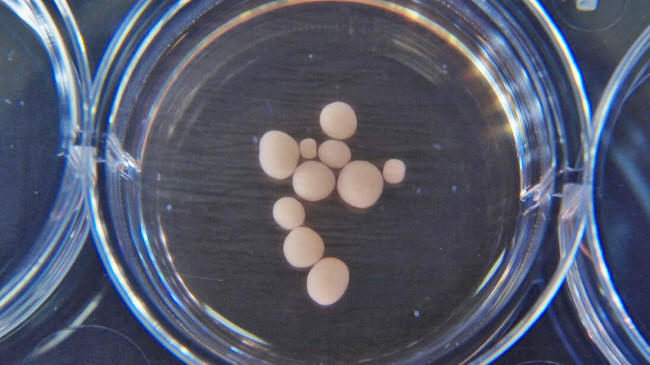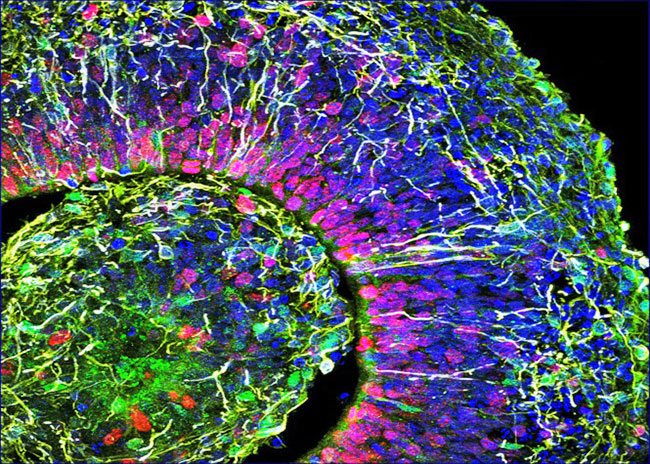|
August 29, 2019 from PHYS Website
at 10 months old. Credit: Muotri Lab/UCTV
Despite being a million times smaller than human brains, these lab-grown brains are the first observed to produce brain waves that resemble those of preterm babies.
The study (Complex Oscillatory Waves emerging from Cortical Organoids model early Human Brain Network Development), published August 29 in the journal Cell Stem Cell, could help scientists better understand human brain development.
The pea-sized brains, called cerebral organoids, are derived from human pluripotent stem cells.
By putting them in
culture that mimics the environment of brain development, the stem
cells differentiate into different types of brain cells and
self-organize into a 3-D structure resembling the developing human
brain.
Networks appear when neurons are mature and become interconnected, and they are essential for most brain activities.
showing the initial formation of a cortical plate. Each color marks a different type of brain cell.
Credit:
Muotri Lab/UCTV
These adjustments allowed
their organoids to become more mature than previous models. The team
grew hundreds of organoids for 10 months and used multi-electrode
arrays to monitor their neural activities.
The signals were sparse and had the same frequency, a pattern seen in very immature human brains. As the organoids continued to grow, they produced brain waves at different frequencies, and the signals appeared more regularly.
This suggests the organoids have further developed their neural networks.
To compare the brain wave patterns of organoids with those of human brains early in development, the team trained a machine learning algorithm with brain waves recorded from 39 premature babies between six and nine-and-a-half months old.
The algorithm was able to predict how many weeks the organoids have developed in culture, which suggests these organoids and human brain share a similar growth trajectory.
generated by multi-electrode arrays reveals how active the brain organoid is... red means very active and black means silent.
Credit:
Muotri Lab/UCTV
Looking forward, the team aims to further improve the organoids and use them to understand diseases associated with neural network malfunctioning, such as autism, epilepsy, and schizophrenia.
|




